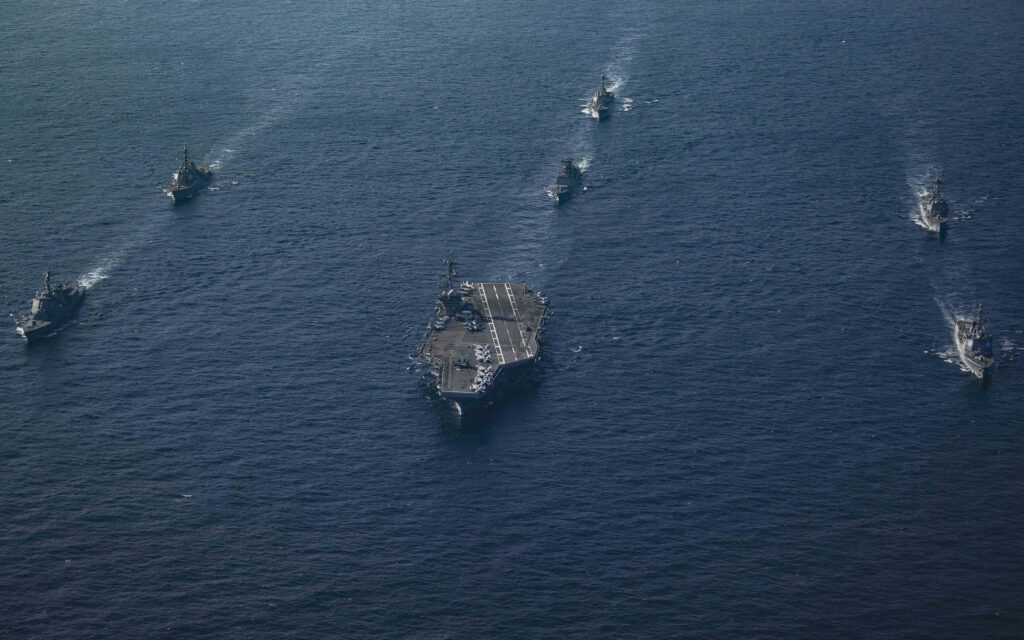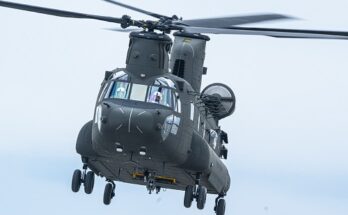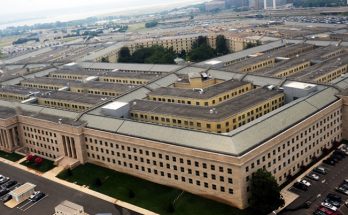 Source: U.S. Navy
Source: U.S. NavyIntroduction
As Forecast International prepares to attend WEST 2025—the premier naval conference and exposition on the West Coast—we’ve prepared this blog to illuminate one of the most critical topics for the future of the U.S. Navy, the service’s shipbuilding plan. This blog explores what the Navy’s plans are, the Navy’s ability to meet its goals, key obstructions to overcome, and how unmanned systems could change everything.
The U.S. Navy’s Shipbuilding Goal
The U.S. Navy established a goal in 2016 to build a fleet of at least 355 ships, a figure that was enshrined in U.S. law as a minimum requirement through the FY18 National Defense Authorization Act. The service’s shipbuilding targets have fluctuated with the completion of various studies since that time, but the current goal is a fleet of 381 battle force ships — i.e. the number of commissioned ships or other ships that contribute directly to Navy warfighting or support missions. This figure stems from a Battle Force Ship Assessment and Requirement (BFSAR) completed in 2023 and is supported by the Navy’s latest 30-year shipbuilding strategy and the Chief of Naval Operation’s 2024 Navigation Plan.
The battle force objective is driven by the Navy’s assessment of the global threat environment, with China’s growing Navy serving as a primary driving factor. China is already home to a robust shipbuilding industrial base, and Beijing’s continued investment in maritime capabilities has resulted in the largest fleet in the world by ship count. Growing ties between China, Russia, North Korea, and Iran compound the U.S. Navy’s interest in a larger fleet to respond to security threats abroad and to serve as a deterrent against future conflicts.
Is the Navy on track to meet this goal?
The current battle force contains 296 ships, and achieving the desired fleet size will be a difficult and costly endeavor. The Navy’s latest 30-year shipbuilding plan outlined two potential outcomes based on the availability of resources over the coming decades. The first option, under which the Navy’s construction plans would be fully funded, wouldn’t reach the desired fleet size of 381 ships until 2042. The alternative plan, which shows potential fleet sizes in a resource-constrained environment, tops out at 348 ships in 2042, well short of the Navy’s goal.
The Navy’s optimum plan will require ship construction funding to increase significantly over historical averages. According to a recent report from the Congressional Budget Office, the Navy’s latest construction plan will cost around 46 percent more per year (adjusted for inflation) than the average amount spent over the past five years. Making matters worse, the CBO estimates the Navy may be underestimating construction costs by around 17 percent, which could further hinder the service’s ability to expand the fleet. The size of the fleet is also projected to decline over the next several years as older ships are taken out of service, amplifying the importance of increasing new construction rates in the out-years.
Key Issues
- Industry capacity: The U.S. shipbuilding industry has long struggled to execute the Navy’s shipbuilding plans. Many shipyards rely on decades-old infrastructure, hampering efficiency and innovation. Workforce shortages, driven by a declining pool of skilled labor and difficulties attracting new talent, further constrain production. Additionally, reliance on complex, global supply chains exposes shipbuilders to delays and rising costs. All these factors have led to significant project delays in delivering several types of ships to the Navy.
- Inadequate funding: The greatest factor in whether or not the Navy will reach its shipbuilding goal is a matter of funding. Rising costs—driven by inflation, material shortages, and increased labor expenses—mean that increased funding is paramount to achieving the Navy’s shipbuilding goals. It appears increasingly unlikely that the Navy will receive the aggressive funding targets it has laid out to achieve its shipbuilding goals. Moreover, the use of Continuing Resolutions (CRs) has become commonplace in Congress, which creates budgetary uncertainty, restricts funding to prior fiscal year levels, and delays new programs.
- Shifting policy: It is no secret that the Navy and Congress have been at odds over the appropriate timeline for retiring and building new ships. For example, the Navy has proposed retiring 19 ships in FY25, a decision that will certainly face headwinds given the heightened focus on raising the number of battle force ships. Moreover, the Navy’s request to build one Virginia class submarine in FY25, breaking the two-per-year norm, concerned many in Congress who think the move hinders shipbuilders’ ability to maintain stable production lines and workforce levels. Lastly, it remains to be seen how the policies of a second Trump administration will cement or alter the Navy’s shipbuilding goals.
The Unmanned Factor
The unmanned vessel element of the U.S. Navy’s long-term shipbuilding plan remains an unresolved issue. Although unmanned platforms are not currently classified as Battle Force assets under the Navy’s plan, these systems will feature prominently in future fleet composition.
The unmanned fleet size will evolve as Navy leadership continues to outline operational and strategic objectives for these assets. However, the 2023 BFSAR denotes procuring 134 unmanned vessels, a mix of 78 unmanned surface vessels (USVs) and 56 extra-large unmanned undersea vehicles (XLUUVs).
Key programs that could drive the Navy’s unmanned shipbuilding effort include the Large Unmanned Surface Vessel (LUSV), ranging from 200 to 300 feet in length; the Medium Unmanned Surface Vessel (MUSV), under 200 feet; and the Orca XLUUV, up to 85 feet long. These systems better reflect the size and displacement of traditional manned surface combatants and submarines, making them likely assets to meet the unmanned fleet objective in the 2023 BFSAR.
Forecast International projects these systems will be built at a cumulative annual rate of roughly six units over the next decade. At that rate, the Navy would not reach its unmanned target goal until the mid-2040s. Significant financial investments in domestic unmanned vessel production capacity will be needed to grow the current procurement rate to meet long-term objectives.
To supplement large USV and XLUUV shipbuilding concerns due to the industrial base and funding woes, the Navy will likely leverage other USV initiatives. These could include the Chief of Naval Operation’s Project 33 effort to integrate autonomous systems and part of the DoD’s Replicator program to field swarming small uncrewed maritime systems at mass.
For more information on the U.S. Navy’s Long-Range Shipbuilding Strategy, check out this article by Shaun McDougall.
image sources
- USS George Washington steams in formation with JMSDF, ROK-N during Freedom Edge 2024: U.S. Navy





